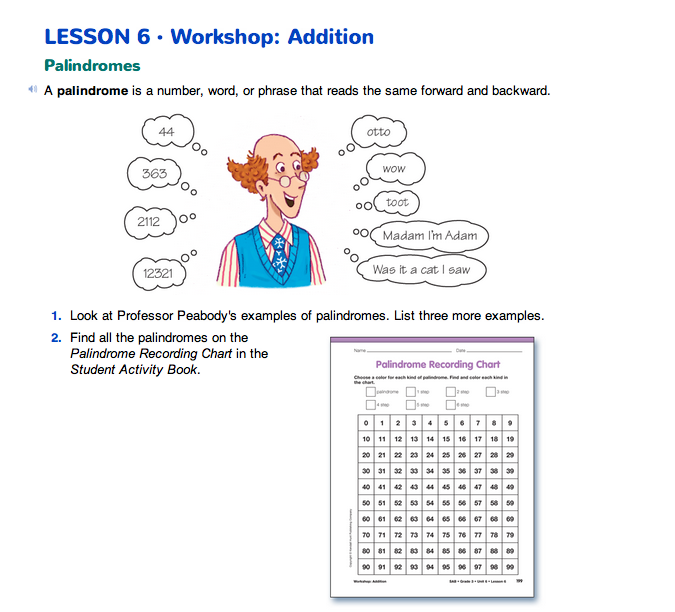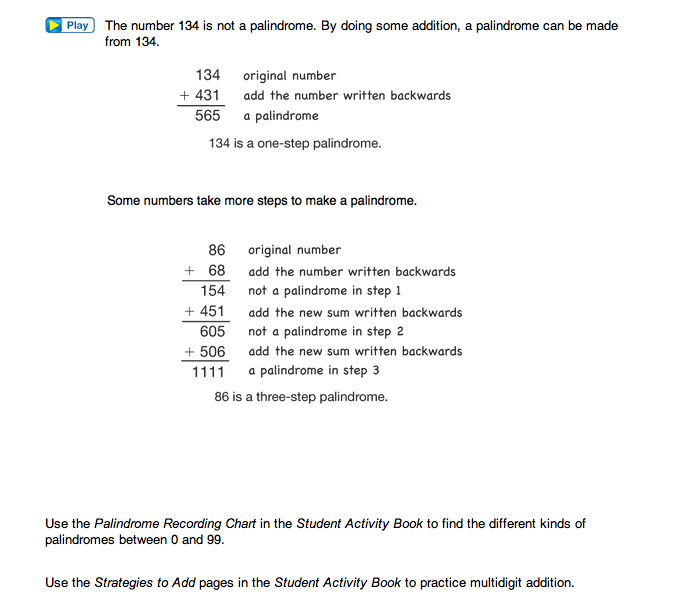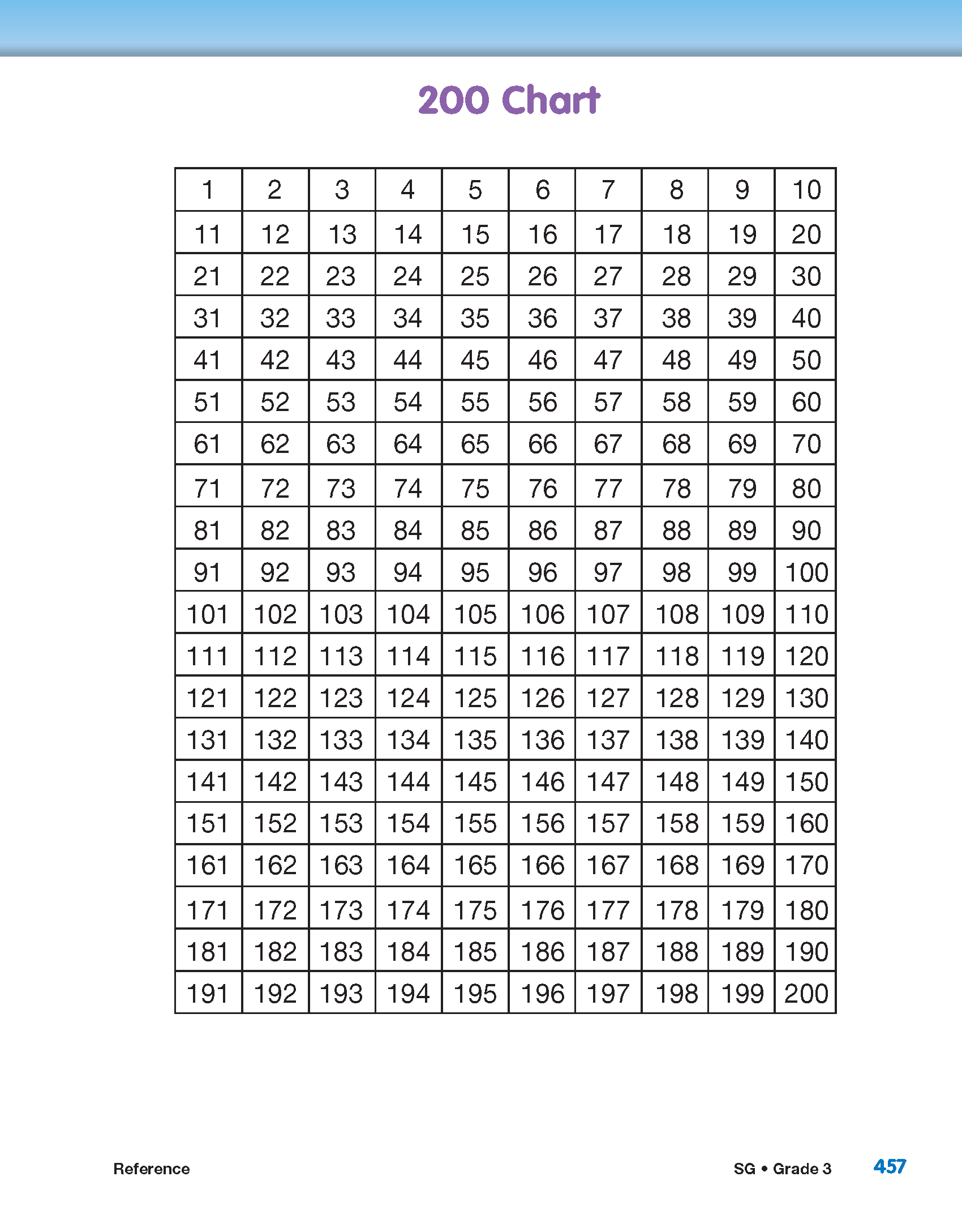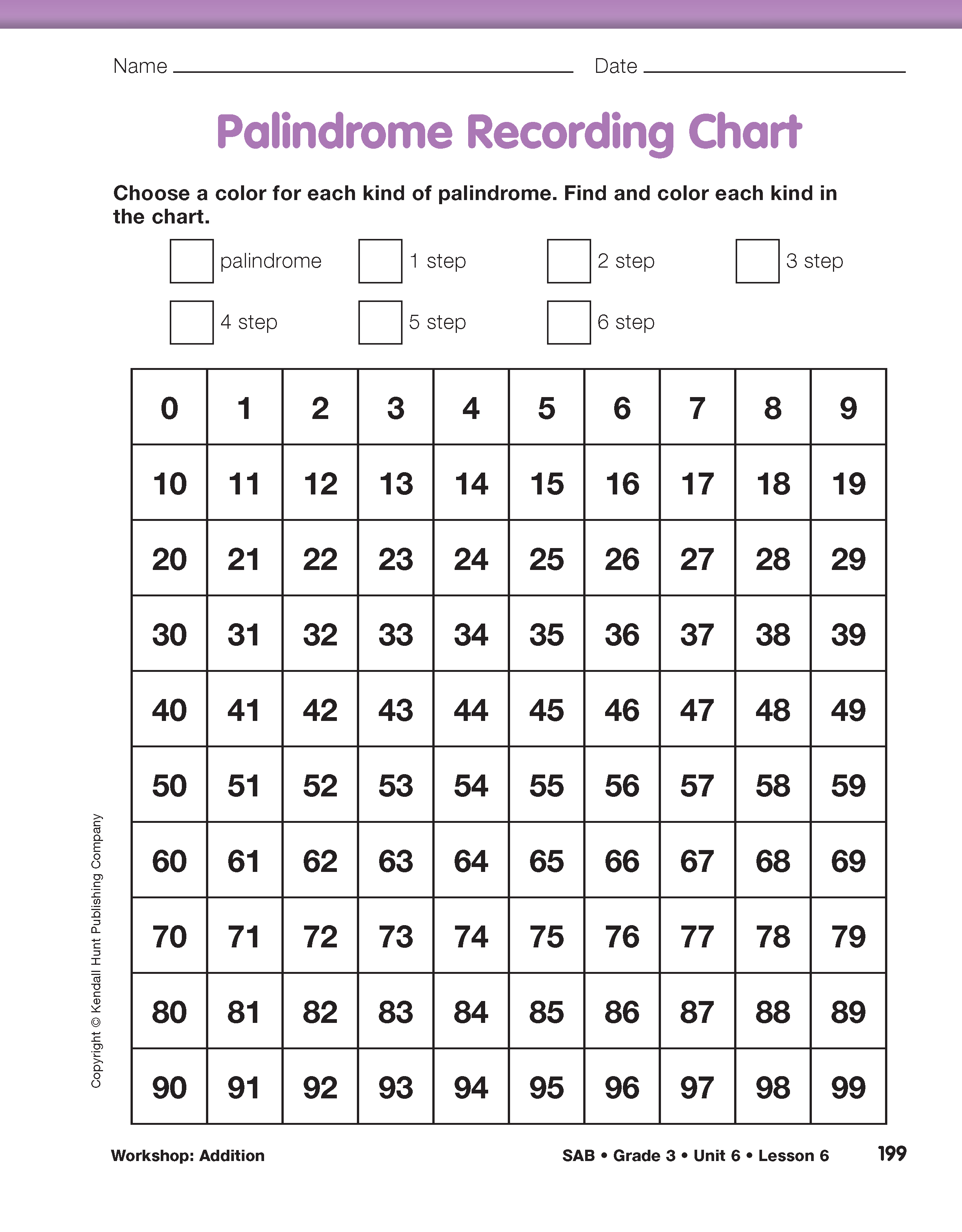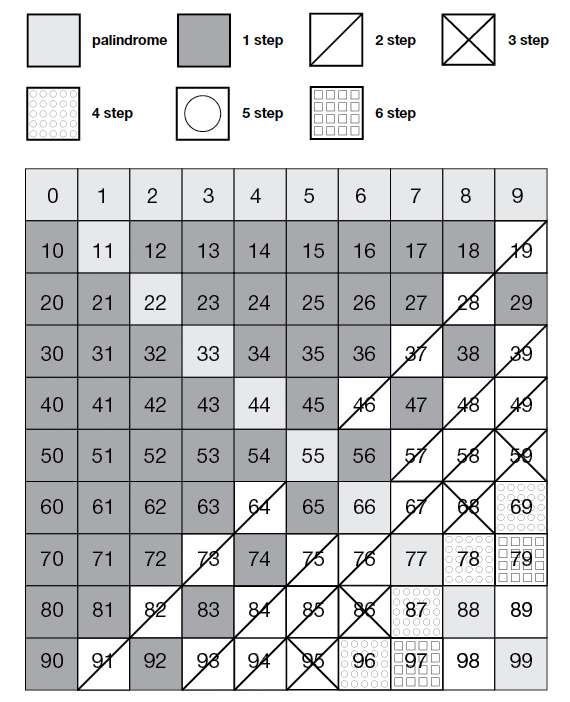Workshop: Addition
Est. Class Sessions: 2–3Developing the Lesson
Part 1. Palindromes and Addition
Find Palindromes. This activity provides a fun context for practice with addition as students explore palindromes. A palindrome is a number, word, or phrase that reads the same forward and backward—22, 121, 8448, and 32123 are examples of number palindromes. Refer students to the Workshop: Addition pages in the Student Guide. Discuss the examples of palindromes that Professor Peabody gives and ask students to give several of their own examples of palindromes in Question 1.
In Question 2, students are asked to find all the palindromes in the chart on the Palindrome Recording Chart page in the Student Activity Book. Students will select a color for the key and color in the palindromes accordingly.
Once students have identified all the palindromes, display the Palindrome Recording Chart page. Have the class look at and describe the chart.
Ask:
Display the 200 Chart page from the Student Guide Reference section.
Ask:
Find Multistep Palindromes. As described in the Student Guide after Question 2, the number 134 is not a palindrome. However, by doing some addition, a palindrome can be created from 134. Use the two examples in the vignette to describe how to find multistep palindromes. Once students understand the process, tell them to identify the different kinds of multistep palindromes on the Palindrome Recording Chart.
Since a major goal of this activity is to develop fluency with addition, students should solve the problems without a calculator. You can call this a “dead battery day.” Students can refer to the strategies on the Addition Strategies Menu page in the Student Activity Book as they are working.
As students begin filling in the Palindrome Recording Chart, they will see patterns and may use the patterns to find various shortcuts for filling in the chart. Encourage them to make predictions based upon the patterns.
Once students have gotten as far as they can on the Palindrome Recording Chart, ask students to describe the patterns they see in the chart using the following discussion prompts:














